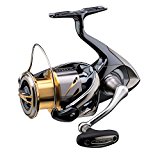Basking Shark
The only risk of getting eaten by a Basking Shark is to swim directly into its mouth, and even then it is likely to spit you out.
The Basking Shark (Cetorhinus maximus) grows very large and is the second largest shark. The largest shark is the whale shark. The whale shark is also the largest fish. This was not always the case. The largest ever shark is the now extinct Mealodon that grow to around 100 feet and had teeth that were 6.7 inches/17 cm long.
Basking Shark Size
The maximum size and length of the Basking Shark is not completely understood. The largest basking shark ever caught measured 40 feet/12.3 meters. It was caught in 1851 off the coast of Canada in the Bay of Fundy, New Brunswick. The Bay of Fundy is known for having he largest tides in the world. The Basking Shark weighted an impressive 21 tons.
Since then, very few have been found over or even close to this size. The average size of Basking Sharks found today is between 20 to 26 feet/6 to 8 meters. Larger Basking Sharks are harder to find due to over fishing of the world’s oceans. It is likely that overfishing will continue to put pressure on the world’s oceans.
Basking Shark Features
The Basking Shark is often mistaken for being a Great White Shark. This is in part from its large size and body composition. The Basking Shark is different from the great white shark in one significant way: its mouth.
The Basking shark does not have rows of serrated teeth and it does not eat animals of any significant size. The Basking Shark filters water for zooplankton as it is its only source of food.
The Basking Shark varies greatly in coloration. Coloration depends on age, size and the condition of an individual’s health. A highly distinctive feature of the Basking Shark is its very large liver. Its liver can reach 25 percent of its body weight and lines the length of its body.
Distribution and Habitat
The Basking Shark can be found wherever there are plankton blooms. This often includes coastal waters off the continental shelf in water that is between 46°F to 58°F/8°C to 14.5°C. It is not found in the Indian ocean but can be found in the Atlantic and the Pacific oceans with the exception of the polar and equatorial bands across the planet.
It can be found as deep as 3000 feet/914 meters but most of the time it is found closer to the surface.
Man Eater Danger Scale
The only risk of getting eaten by a Basking Shark is to swim directly into its mouth, and even then it is likely to spit you out. Basking Sharks eat plankton as their only food source. The man eater danger scale for the Basking Shark is a big zero.


